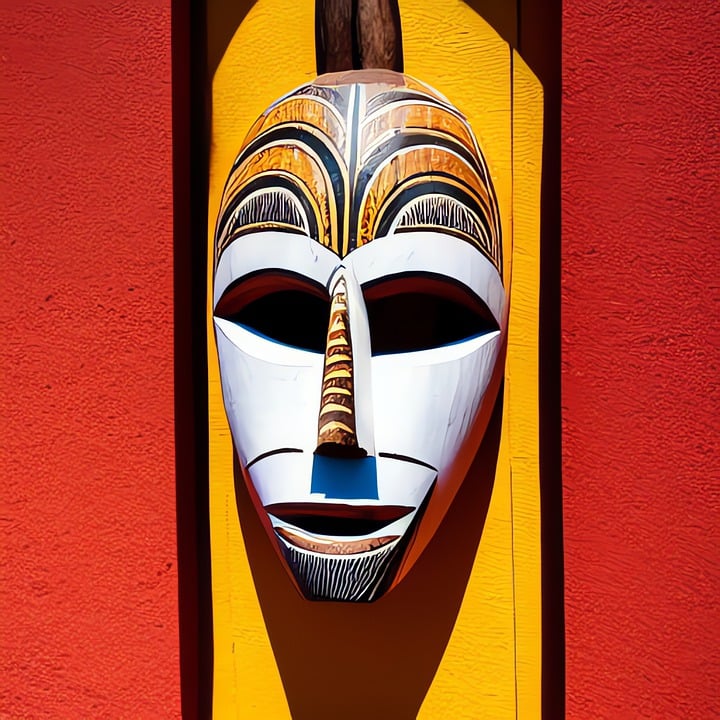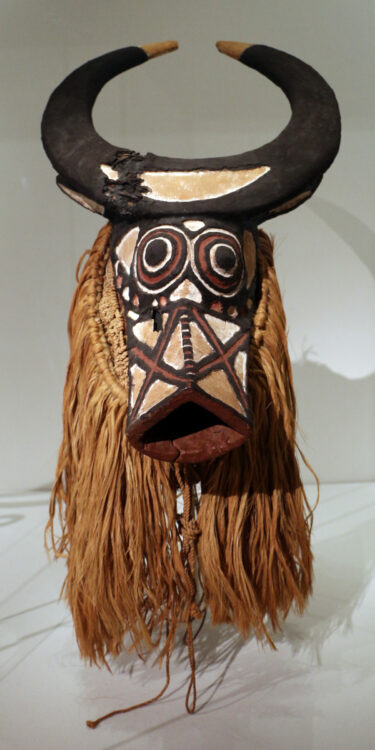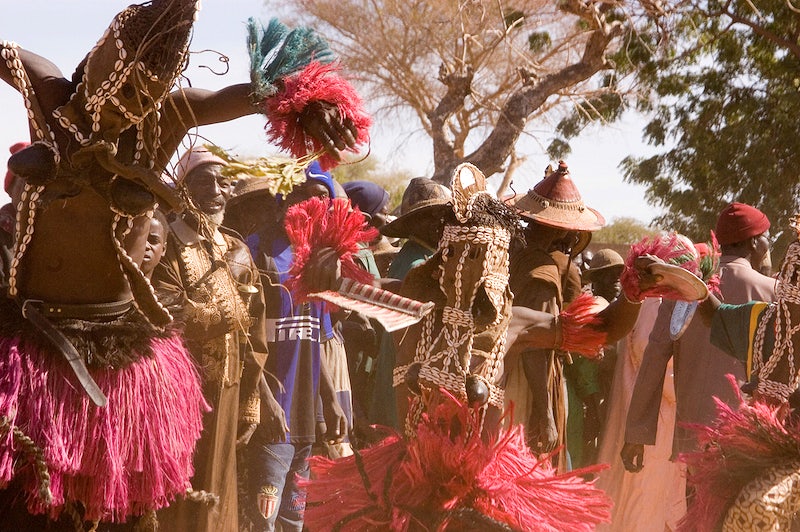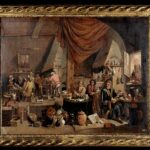
When I think of African art in the broadest sense, I immediately imagine masks—belonging to old communities living upon scorched earth or in dense jungles, masks used in rituals and ceremonies marking central events of human existence (birth, adulthood, marriage, death) or other important occasions that can ensure a safe and prosperous life (a good harvest, defeat of an enemy). One can guess that the prevalence of masks across the continent is connected to complex beliefs in realms that we are unable to directly perceive with our senses.

African masks are varied in physical form—they can be made of wood, straw, fabric, leaves; covering just the face or the entire body. They are also multi-functional (being used for a wide range of rites and festivities) but they all have a core purpose. A presentation by the National Museums of Kenya on Google Arts and Culture explains this in short: “Masks are an essential feature of traditional African culture and have served an important role in ritual and ceremony for centuries. They are both idea and form. The artistry of African masks is self-evident and, for the people who create them, they have a much deeper meaning than surface beauty. In general, the mask form is a physical mechanism to initiate transformation, whereby the wearer takes on a new entity, allowing him to have influence on the spirits to whom he is appealing to or offering thanks.”
To the disenchanted, rational and scientific Western mind, conditioned to believe in and engage with only what is immediately visible and measurable, this concept can sound very absurd.
French photographer Jean–Claude Moschetti, who has captured tribes and ethnic groups in multiple African countries, has an interesting perspective on the difference between Western and African worldviews. He writes that: “The African continent is steeped in a rich and complex history of mysticism and in many traditional societies magic is accepted as an integral part of life.
“But unlike the Western interpretation of magic as a series of smoke and mirrors, magic in the African sense is part of the physical realm, a physical reality that manifests during rituals often through the wearing of masks. By donning a mask, the wearer straddles both the physical and mystical realm, and becomes a conduit between the living world and the supernatural world of the dead, the ancestors and other mysterious entities. As a Vodun initiate of the Egungun cult in Benin, I had a unique insight into this world of shadows.”

Communication with spirits—of one’s forefathers, animals, non-human figures from beyond the natural world, etc.—is one feature of the African mask. Another is the continuation of heritage. The mask is a container and carrier of collective identity as it has played out across centuries, it is an object of pride.
In an article on Al Jazeera, Ki Léonce, executive director of ASAMA (the Association for the Protection of Masks) and Lecturer at the Joseph KI-Zerbo University of Burkina Faso—a country that formally celebrates masks from all of Africa—says: “There are two aspects about masks. One is cult and the other is culture; there might be a religious conflict for people who venerate masks, but there is no conflict from the cultural point. It is our cultural patrimony, every African, every Burkinabe shares it and we should not allow other people to dictate our way of thinking, but preserve our cultural heritage.”
Considering the purpose of masks, I wonder if we could draw parallels between them and phenomena in the West today. In Africa, masks are donned externally for internal transformation. In secular, disenchanted society, I see fashion and accessories bearing this kind of quasi-magical power. The public may not believe in supernatural entities but it is willing to accord too much authority to celebrities, closely following what they wear, how they style themselves. By obtaining—and putting on—an item of clothing or object or a manner of presentation endorsed by or associated with a prominent model or actor or sportsperson, individuals desire a kind of alteration too. Of personality, of status; they signal affiliation with somebody of a higher rank.
Interestingly, there is a term connected to this in anthropology and psychology—“magical law of contagion”, the belief that a person’s essence can be transmitted through objects they have touched: clothing, artwork, tableware, jewelry, furniture and decorations, among other things. An article on LA Times quotes research on this topic: “Consistent with the contagion hypothesis, physical contact appears to have real-world effect on how much people pay for celebrity object. Moreover, the present findings suggest that desires for positive celebrity memorabilia really do reflect a belief in contagion.”
The African mask, I believe, can be seen as an instrument that is just more forthright about the human belief in contagion (and the aspiration for the elevation of the self)—that exists in different forms across cultures.
Written by Tulika Bahadur.

